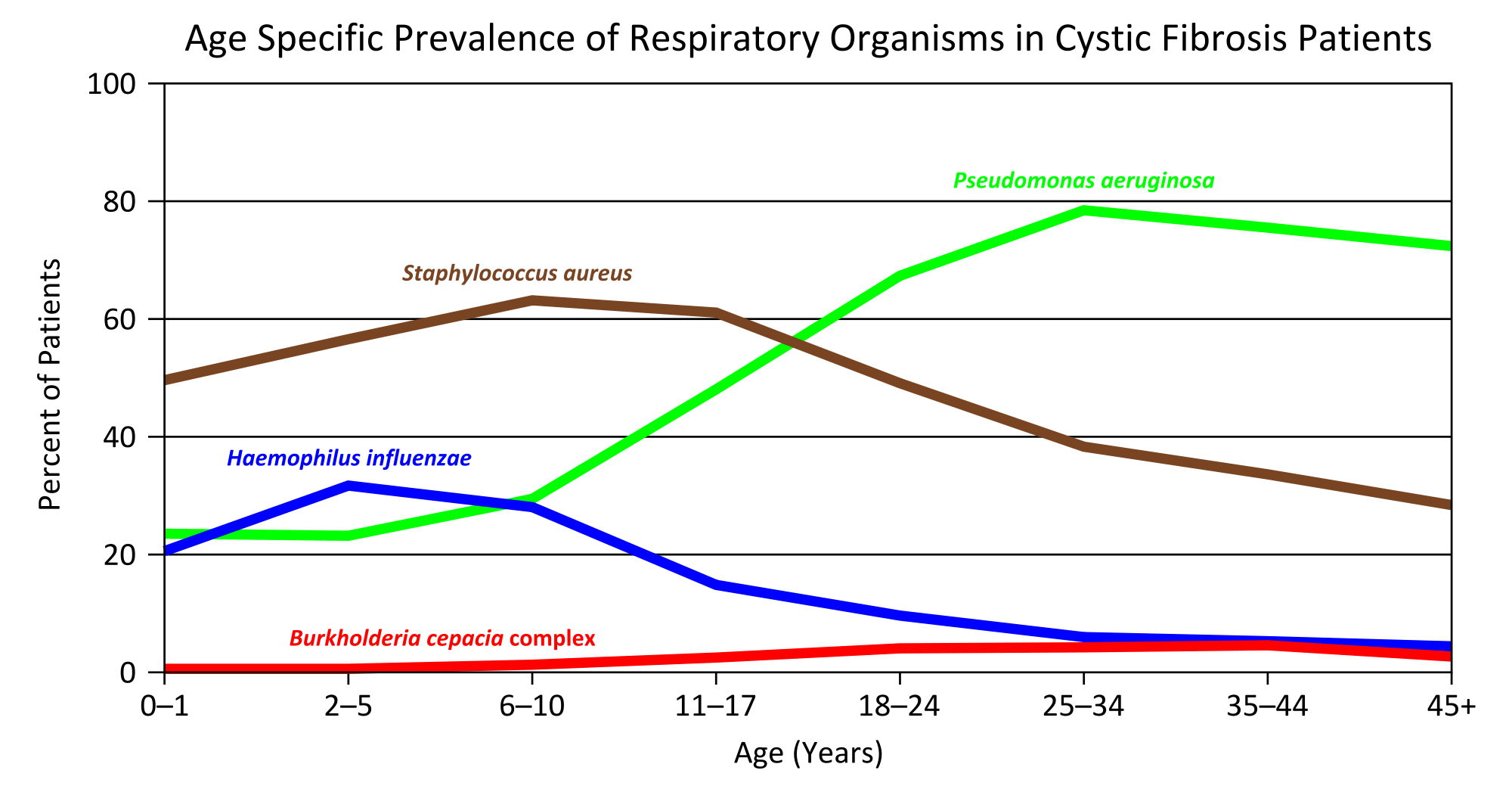Abstract
During the period of 1979 to 1983, 38 patients with cystic fibrosis (CF) at the CF center of St. Christopher’s Hospital for Children in Pennsylvania developed respiratory tract colonization with Pseudomonas cepacia. Seventeen (45%) of the patients with colonization died. Yearly incidence rates of P. cepacia colonization fluctuated between 1.3% and 6.1%, suggesting an endemic phenomenon. Case-control studies showed that severe underlying CF, use of aminoglycosides, and having a sibling with CF and P. cepacia colonization were significant risk factors for P. cepacia colonization. Once colonized with P. cepacia, patients with CF were likely to be hospitalized longer (P = 0.008) and to die sooner (P = 0.0001) than control patients with CF. Environmental and microbiologic studies did not identify a common source or mode of transmission of P. cepacia among patients. The results of this investigation suggest that P. cepacia colonization of patients with CF was endemic in the hospital, occurred more frequently in those with severe disease, and was associated with adverse clinical outcome.
Tablan OC, Chorba TL, Schidlow DV, White JW, Hardy KA, Gilligan PH, Morgan WM, Carson LA, Martone WJ, Jason JM
J. Pediatr. 1985 Sep;107(3):382-7
PMID: 4032134
